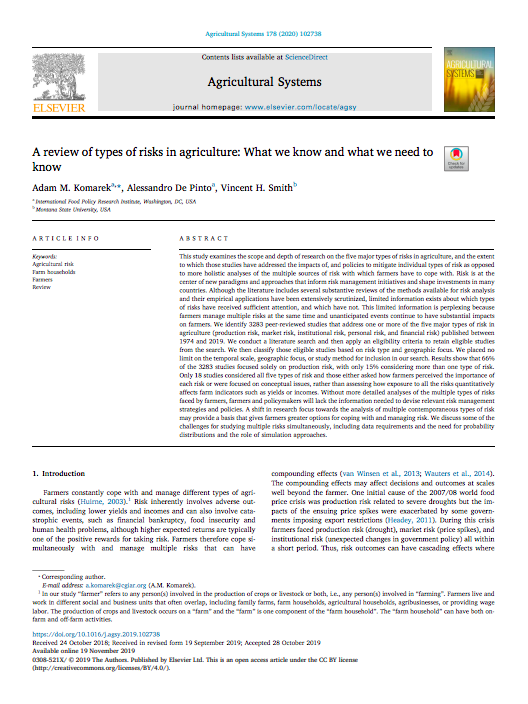A review of types of risks in agriculture: What we know and what we need to know

ABSTRACT
This study examines the scope and depth of research on the five major types of risks in agriculture, and the extent to which those studies have addressed the impacts of, and policies to mitigate individual types of risk as opposed to more holistic analyses of the multiple sources of risk with which farmers have to cope with. Risk is at the center of new paradigms and approaches that inform risk management initiatives and shape investments in many countries.
Although the literature includes several substantive reviews of the methods available for risk analysis and their empirical applications have been extensively scrutinized, limited information exists about which types of risks have received sufficient attention, and which have not. This limited information is perplexing because farmers manage multiple risks at the same time and unanticipated events continue to have substantial impacts on farmers.
We identify 3283 peer-reviewed studies that address one or more of the five major types of risk in agriculture (production risk, market risk, institutional risk, personal risk, and financial risk) published between 1974 and 2019. We conduct a literature search and then apply an eligibility criteria to retain eligible studies from the search. We then classify those eligible studies based on risk type and geographic focus. We placed no limit on the temporal scale, geographic focus, or study method for inclusion in our search.
Results show that 66% of the 3283 studies focused solely on production risk, with only 15% considering more than one type of risk. Only 18 studies considered all five types of risk and those either asked how farmers perceived the importance of each risk or were focused on conceptual issues, rather than assessing how exposure to all the risks quantitatively affects farm indicators such as yields or incomes.
Without more detailed analyses of the multiple types of risks faced by farmers, farmers and policymakers will lack the information needed to devise relevant risk management strategies and policies. A shift in research focus towards the analysis of multiple contemporaneous types of risk may provide a basis that gives farmers greater options for coping with and managing risk. We discuss some of the challenges for studying multiple risks simultaneously, including data requirements and the need for probability distributions and the role of simulation approaches.